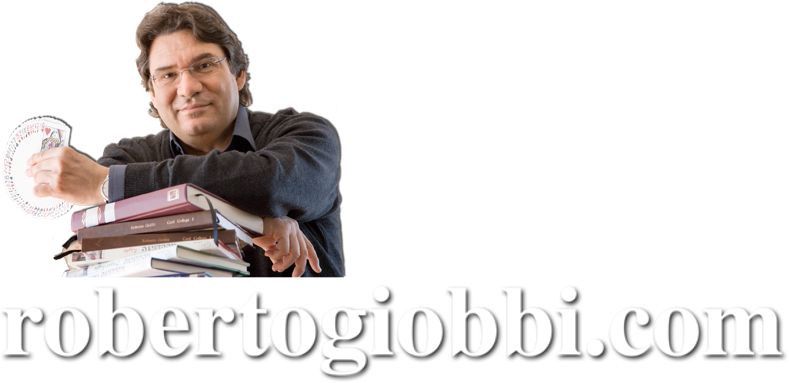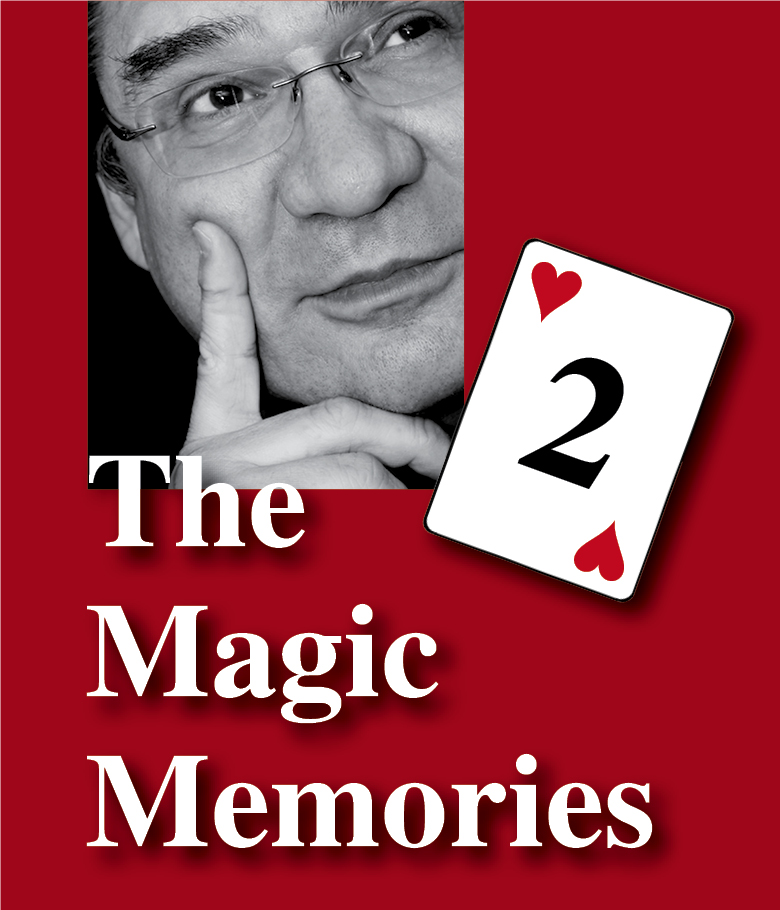
Hi everyone!
This is #42 of The Magic Memories, gone online SUN, 17th October 2021, at 0:07.
Boring (Card) Tricks
Today I would like to answer a question that came up when I did a lecture for TCC, my publisher in China, in Sheng-Zen in September 2019: “How can you avoid making self-working card tricks look boring?” An excellent question with more implications than the asking person probably thought.

First, we are tapping into the cliché that card tricks are boring. This is, in my opinion, nonsense. Cards are an instrument, like in music a violin or a piano are instruments. It would be simply foolish to say that violin or piano music is boring. Obviously, you might not like it, as you might not like an old Bordeaux or Impressionist painting, but this is quite another level of reasoning, Cards are just an instrument, and as such neither boring nor interesting, but what you do with it, of course, is. Because it will depend on how well you master the instrument (not vice-versa), what piece you choose to perform, and last but not least how inspired and talented your performance with it is. This “Artistic Trinity” made up of “Trick, Technique and Talent – call them the “Three Tees” – is what makes or breaks the experience of a performance, any performance, regardless of the instrument.
This takes us to the second point, that the “trick”, the content of a presentation, could be a weak one. Although it has been said that “there are no bad tricks, only bad performers”, readers of my texts know that I do not believe in that: I believe that there are quite a bit of bad tricks out there, and less good ones than one would think. So, the question is: How do you tell a good from a bad trick? I’ve answered this question in several of my writings, within different contexts, e.g., in Ask Roberto, in question 24, where James Hendrix asked: “What, in your opinion, is the best “self-working” card trick?”, or question 33, where John Meads asks: “Do you have a favorite effect with ESP cards?” Look it up there, please.
Let’s therefore assume that you do have a good trick at hand, and now face the challenge of making it fascinating to your audience, i.e., involve them intellectually and emotionally to ultimately create the sense of wonderment, which is the purpose of a magic performance. The stumbling block you will typically encounter, even when you’ve found a “good self-working” trick, is how to make the not-so-interesting parts of the trick interesting. Because, let’s face it, almost every self-working card trick has one or more procedural sequences, such as having to deal cards, make calculations etc. (Because that’s the price we pay for replacing sleight-of-hand with “easy” methods – there’s always a price to pay…)
One approach is to eliminate all such tricks altogether. This is possible, but there are not many self-working card tricks that can boast about being visual. Here are a few examples, though: “Follow the Leader” (Card College Lightest, p. 26), “Voilà, Four Aces” (Card College Lighter, p. 3), or “Fully Automatic Aces” (Card College Lighter, p. 13), to mention just a few from my own Light-Series. BTW: For notetaker among you this is the moment to open another note in your paper or electronic notebook and make a list of all the tricks you can think of under the heading of “Visual Self-working Card Tricks”. This is also an excellent discussion topic for a group of people live or over Internet.
Back to the subject. Let’s now assume that your trick is not so visual, but still a very good one, however, it requires procedures that could look suspicious and feel boring, if they are not correctly staged. The first thing to do, in my opinion and professional experience of many years, is to use an intriguing Prologue. I’ve written about this before several times. You can find dozens of ideas for a prologue in my Agendas (Secret Agenda, Hidden Agenda, Secret Twitter), and in Sharing Secrets I have devoted a chapter with several examples to the subject.
A good Prologue will automatically trigger the presentational plot of the trick, and will lead to a satisfying Epilogue. Just one example is “Further Than Ever” from my Card College Lightest (p. 97), which commences with these words: “Just as with other arts and sciences, magic keeps developing and reflecting the current times. In past decades, for example, a magician would say, ‘Please take a card.’ ” This Prologue, by the way, is not just quick and to the point, it also opens a window for the audience to the fact that magic has a cultural history, and that ideas come from somewhere, change through the current of time, and are a reflection of what people believe and do in every time period. That’s A LOT of additional concepts that will make any performance more substantial. As I’ve written in other places, we should try to not only entertain an audience, but also educate them by giving them occasional insights in the art of magic.
Anyway, once you’ve thought about the dramatic construction of the trick, it will be necessary to go through the trick chronologically, identify all potential “boring” moments, and make them “interesting”. So, if your trick requires you to deal cards, make that meaningful. For instance, as you start dealing the cards in two packets on the table, you could say, “In life we have to make choices all of the time. Essentially, it boils down to have to choose from two options: shall I take that job or not, shall I marry my partner or not, shall I have a Coke or a glass of Bollinger Grande Année 2012?” Obviously, this can be serious or in fun, or anything in-between. The point is to engage the audience in the process and make it somehow appealing. Yes, you’ve got to “use your head” because magic is difficult, and entails a lot of work. Or follow the instruction of authors who know more than you 🙂 Alternatively, you can think of creating an interesting context for the dealing. If, e.g., you need to deal 25 cards in five packets of five cards each, make it a “Poker Demonstration” and deal five hands to five imaginary (or real) players. This will be much more intriguing than simply dealing cards in five packets in a row.
Another thing, when dealing is required, is to practice dealing fast, and to make pauses during the dealing process, looking up, making an informative or amusing comment, always addressing a spectator in particular for better communication, and then continue with the deal.
OK, that’s almost a lecture, isn’t it? It is actually one of the over 50 lectures I’ve done in the past, simply because it is a great subject, and as I mentioned at the beginning, with numerous implications. And we only scratched the surface. But now you have a full week to think for yourselves about the matter, and will get from one subject into the other, re-discovering what you already knew, namely that magic is wonderfully complex and the subjects are interwoven in endless ways, like the galaxies in the known (and unknown) universe. Oh my, it’s time for dinner!
Have a great week!
Roberto Giobbi
PS: If you want to say “Thank you” in a tangible way, buy something from the webshop. We’re still in Corona times with very little work, if at all, and I’m sure there must be an item that you don’t have. Now is the moment to get it 🙂

